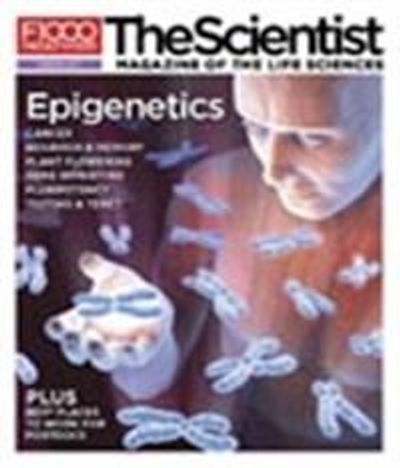The Footprints of Winter
Epigenetic marks laid down during the cold months of the year allow flowering in spring and summer.

Many plants that grow in climates with a cold winter require growth for several months at low temperatures—a process called vernalization—to promote flowering in spring, when days lengthen and temperatures increase. Without this period of cold, plants would grow leaves in the spring, but would fail to flower. This phenomenon, familiar to every horticulturist, was difficult to explain with genetics alone; something occurred during those cold months that left a mark, which, in effect, released a switch that permitted flowering in spring. In recent years, the field has looked beyond the genome and found that vernalization is controlled by a wide range of epigenetic mechanisms.
Researchers studying the genetics of flowering found that the flowering switch was controlled by two central players—the genes FLOWERING LOCUS...
When 2
3 and two noncoding RNAs have now been implicated in vernalization-induced recruitment of PHD-PRC2. One of these, termed COLDAIR, is a long (about 1 kb), noncoding sense RNA produced from sequences within FLC—the very gene it appears to silence.4 Expression of COLDAIR is cold-induced and several observations suggest it indeed silences FLC. First, when the sequence within FLC that coded for the ncRNA was deleted, FLC did not stay switched off when plants were moved to a warm environment. In a sense they had become forgetful by losing their winter marks, showing that this ncRNA was required for silencing.4,5 Secondly, researchers have shown that a component of the PHD-PRC2 complex binds the COLDAIR ncRNA and recruits the PHD-PRC2 to FLC.
A second noncoding RNA, termed COOLAIR, is also produced from FLC.6 Like COLDAIR, COOLAIR expression is also strongly upregulated by cold. There is good evidence that COOLAIR also plays a role in regulating FLC expression. Two genes, FPA and FCA, promote flowering by downregulating FLC expression. Gordon Simpson and colleagues from Dundee University in Scotland showed that these genes function by regulating the processing of COOLAIR transcripts.7 However, FPA and FCA are not required for the vernalization response, and the function of COOLAIR in vernalization is less clear. One possibility, suggested by Jae Bok Heo and Sibum Sung at the University of Texas at Austin, is that COOLAIR may reduce transcription from the normal promoter at the 5’ end of the FLC protein coding region and promote COLDAIR expression from its cryptic promoter within FLC.4
Although many plants show a vernalization response with epigenetic features, the target genes and even the mechanisms may be different than in Arabidopsis. In sugar beets, vernalization results in stable repression of a floral repressor which, although it is unrelated to FLC, acts in a similar fashion to repress an FT homologue. It is not clear yet if this is also PcG mediated. In cereals, vernalization causes the stable upregulation of a gene (VRN1) which promotes flowering. Here, the epigenetic memory is of an active state, and is correlated with H3K4me3 methylation at VRN1. It is likely, although not yet proven, that this will involve the trx-G genes as these are known to catalyze H3K4me3 methylation and work antagonistically to the PcG to mediate stable gene activation.
 | This article is adapted from an upcoming review in F1000 Medicine Reports. It will be available for citation at f1000.com/reports (open access) |
Interested in reading more?




